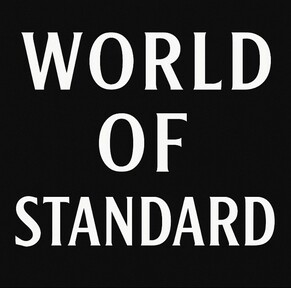StandardPrva analyzes: The Swift system enters the development of its own blockchain infrastructure
08.10.2025The international payment system SWIFT, known for decades for secure financial message exchange among banks, has announced a significant shift – the development of its own blockchain infrastructure. This news echoed at the Sibos 2025 conference in Frankfurt, where SWIFT confirmed plans to introduce a shared digital ledger in cooperation with over 30 global banks. The goal is to enable constantly available (24/7) cross-border payments in real time, relying on tokenized forms of money (such as stable cryptocurrencies and digitized bank deposits). Below, we analyze the motives for this move, its impact on the international payments market – especially in the era of stablecoin growth – and compare SWIFT's strategy with competitors like Ripple, stablecoins, and CBDCs. We also examine the potential consequences for capital flows, the banking sector, and fintech innovations.
Why is SWIFT switching to blockchain?
SWIFT is making this move in response to accelerated technological changes and competition in the world of international payments. The key motives include:
Competition from blockchain networks and fintechs:
The emergence of private stablecoins (such as USDC, USDT) and blockchain payment networks (e.g. Ripple’s On-Demand Liquidity or Stellar) has shown that near-instant global transfers are possible outside the traditional banking system. These alternatives enable transactions in a matter of seconds, 24/7, compared to SWIFT where international payments often take two to three business days, limited to banking working hours. Faced with the risk of being bypassed, SWIFT is trying to adopt similar technology on its own turf.
Stablecoins and client demand for faster services:
Stable cryptocurrencies pegged to fiat (stablecoins) are experiencing a sharp increase in global usage, forcing traditional banks to pay attention. As Barry O’Sullivan from the company OpenPayd notes, the industry is changing rapidly and banks are realizing that stablecoins are becoming an important factor. Large companies, investors, and users are demanding cheaper, faster, and always-available payments, so SWIFT cannot ignore that pressure. By introducing a blockchain platform, SWIFT plans to lower technical barriers and integration costs for banks that want to use stablecoins, partially standardizing that area – although multiple systems will likely continue to coexist in parallel.
Pressure from regulators and central banks (CBDC trend):
More than 130 countries are now exploring or developing their own central bank digital currencies (CBDCs). Many CBDC pilot programs have already been launched by leading central banks. This trend puts pressure on SWIFT to adapt, as it risks becoming outdated if it doesn’t connect with the new standards of digital money. The planned SWIFT blockchain ledger is envisioned from the beginning to be interoperable – not only with existing banking systems, but also with future networks, including potential CBDC platforms. This means SWIFT wants to be a neutral “bridge layer” between different digital currencies and networks, rather than being bypassed by new systems.
Preserving SWIFT’s role and trust:
SWIFT has spent decades building a reputation as a neutral global infrastructure that does not favor any currency, bank, or country. That neutrality and wide connectivity (11,500+ banks) remain a huge advantage – SWIFT “is connected to practically all banks in the world,” as observers point out. By introducing blockchain technology, SWIFT seeks to remain relevant in the digital age, positioning itself as a bridge between traditional finance (TradFi) and the new era of decentralized finance (DeFi). In other words, SWIFT wants to innovate “in step” with the industry: simultaneously improving existing “fiat” rail systems, while building the digital rails of the future.
Development plan:
Specifically, SWIFT is already working with a group of over 30 financial institutions from 16 countries on designing a shared digital ledger within its infrastructure. The first focus is on real-time cross-border payments, 24/7, with a prototype being developed in partnership with the company ConsenSys (a well-known Ethereum developer). This ledger is expected to be secure, resilient, and compliant with regulations at the level the industry already associates with SWIFT. The ledger will serve as a permanent, distributed record of transactions between banks, where each transaction is recorded in order, validated, and executed if needed via smart contracts. It is important to emphasize that SWIFT sees itself only as an infrastructure provider – the types of tokens to be transferred through that network will depend on commercial banks and central banks. According to available information, support is expected for any kind of “regulated tokenized value,” including regulated stablecoins (compliant with regulations such as MiCA), tokenized bank deposits, and even CBDC digital currencies. In other words, on SWIFT’s blockchain, digital versions of national currencies and commercial deposits could be “circulating” tomorrow under bank supervision, thus expanding SWIFT’s role from a mere message carrier to a facilitator of value transfer in the new digital ecosystem.
Impact on international payments and the stablecoin market
SWIFT’s entry into the blockchain domain comes at a time of expansion of digital currencies in international money flows. Stablecoins – cryptocurrencies pegged to the value of fiat money (most often the US dollar) – have especially shaken the remittance and cross-border payment sector. Every day, billions of dollars circulate through blockchain networks via stablecoins, with USD-denominated tokens such as Tether (USDT) and USD Coin (USDC) dominating. These digital “currencies” allow people and companies to transfer money around the world in a matter of seconds instead of days, with lower fees and regardless of the time of day or holidays. In comparison, traditional SWIFT transfers are reliable but slow: they often take a few business days to settle and can be delayed over weekends or due to different time zones and intermediary banks.
Stablecoins as a challenge and incentive
Despite stablecoins not yet having taken over the main part of global money flows (they constitute less than 1% of total global transfers), they are already significantly used in certain segments — e.g. for remittances of workers from abroad, B2B payments and e‑commerce, where they have proven as a faster and cheaper complement to traditional bank remittances. In practice, some business and individual users already bypass banks by converting funds into stablecoin (most often USDT/USDC) and then sending them directly to the receiver, who, if needed, converts them into local currency. In that way SWIFT is in a certain sense quietly “bypassed” for smaller transactions, which is particularly reflected in corridors with high fees and slow services.
SWIFT’s blockchain initiative could have a dual effect on this trend. On one side, it will facilitate banks’ entry into the world of digital currencies. Banks that have hesitated to integrate crypto‑infrastructure independently will get via SWIFT a relatively ready solution to work with tokenized monies. Analysts emphasize that SWIFT’s global network and existing links can reduce integration costs for banks and speed their inclusion into the stablecoin ecosystem. In other words, instead of each bank experimenting separately with blockchain, SWIFT’s move can provide a shared platform accepted by all — thereby standardizing and unifying the global stablecoin landscape. That could increase confidence in regulated stablecoins and their usage in the broader financial system, because transactions would go through a known and trusted intermediary (SWIFT) rather than through diverse crypto exchanges and wallets.
On the other side, competition in the international payments market will intensify. If SWIFT succeeds in launching its blockchain, players such as fintech startups and existing crypto platforms will need to innovate further to retain advantage. Stablecoin providers (e.g. issuers of crypto‑dollars) might connect to SWIFT’s network as regulated entities, or continue to offer parallel, more decentralized transfer routes. It is realistic to expect some fragmentation of the market despite standardization: even SWIFT’s own analyses admit that existing private stablecoins, national CBDC systems and regional solutions will continue to coexist for the foreseeable time. SWIFT’s ledger could potentially connect them, but likely will not exclude alternative flows of payments.
The regulatory context is also important: stablecoins are becoming subject to clearer regulation (e.g. in the U.S. a law on payment stablecoins is in procedure, in the EU the MiCA regulation), which will in great measure determine how banks may use them. SWIFT states that its system will support “regulated” tokenized values, which suggests that only stablecoins that satisfy supervisory criteria (reserve backing, issuer licensing, etc.) will be accepted. That would avoid risks that accompanied some unregulated crypto projects. For banks and their clients, such controlled approach to stablecoins via SWIFT could provide the best of both worlds: the speed and availability of blockchain, yet the trust, security and regulatory compliance expected from the traditional financial system.
Comparison with Ripple, stablecoins and CBDCs
SWIFT’s move enters an area where there are already other solutions for fast international transactions. How does SWIFT’s strategy differ from the approach of its competitors and complementary systems?
Ripple and similar blockchain platforms: Ripple (company known for the cryptocurrency XRP and the XRP Ledger) has for years promoted its technology as a faster and cheaper alternative to SWIFT for bank payments. RippleNet network and On-Demand Liquidity use the XRP token as a bridge between currencies, enabling nearly instantaneous transfers between financial institutions. Ripple has succeeded in attracting certain banks and payment providers, but has not reached the universal acceptance that SWIFT enjoys. The strategic difference is that SWIFT now does not tie its system to one cryptocurrency; on the contrary, it builds a neutral platform that can support various tokens (dollars, euros, stablecoins of various issuers, even XRP if it becomes regulated). SWIFT thus remains currency‑agnostic and technology‑agnostic, relying on its bank consortium and standards, while Ripple built its own network from scratch. Interestingly, Ripple’s CEO Brad Garlinghouse reacted skeptically to SWIFT’s announcement, calling it “a marketing move timed for the Sibos conference, rather than a meaningful product launch.” He emphasized that Ripple has for years built real digital infrastructure solutions in production, including issuance of its own stablecoin (RLUSD) on the XRP Ledger, while SWIFT is only announcing prototypes. Still, SWIFT’s advantage is its global network and neutrality: instead of using XRP or any particular token, SWIFT chose Ethereum technology (ConsenSys Linea network) for its pilot project because of its programmability and privacy capabilities (zk‑proof technologies). This indicates that SWIFT wants flexibility — to allow smart contracts and interoperability with the Ethereum ecosystem (where many stablecoins and tokenized deposits exist), but later to connect via bridges to other networks or use different tokens as needed. In short, Ripple’s approach: specific blockchain network (XRP ledger) with its own token; SWIFT’s new approach: a common ledger within an existing institution, without tying to one coin, with broad banking community participation. It will be interesting to see whether Ripple and similar providers might become complementary to SWIFT’s platform (e.g. XRP or other crypto assets being integrated as one form of liquidity on the SWIFT ledger) or continue to be competitive offerings for banks seeking solutions.
Stablecoins (private sector): Independently of SWIFT, the stablecoin market is developing through private companies (e.g. Circle for USDC, Tether for USDT, banking consortia for euro stablecoins, etc.). To date, stablecoins have primarily been used outside traditional banks — in crypto exchanges, fintech apps, etc. SWIFT’s initiative could bring stablecoins “into the mainstream” banking context. Their strategy is to include stablecoins under the umbrella of the banking system rather than see them as an external threat. That differentiates them from pure crypto platforms: whereas e.g. Ethereum or Tron networks offer open infrastructure where anyone can send stablecoin, SWIFT will offer a permissioned network accessible to member banks where stablecoin transactions happen under known rules, KYC/AML checks, etc. For end users (companies, savers) this would mean they might have stablecoin offerings from their bank for international payments, without needing to go to a crypto exchange. Competing stablecoin systems will still exist (for example JPM Coin from JP Morgan works within that bank, the Signet network of Signature Bank has existed for instant payments, etc.), but SWIFT can become the backbone connecting them. For stablecoin issuers themselves, SWIFT’s move is welcome because it promises greater demand in a regulated environment. Societe Generale‑FORGE (French bank that issues its own euro stablecoin) has already supported SWIFT’s initiative, expecting that via it they will be able to conduct regulated stablecoin transactions globally. Note: SWIFT will likely require that any stablecoin included in the network has full reserve backing and regulatory approval, which is an approach similar to the newest laws (e.g. the U.S. “Genius Act” requires 100% reserves in liquid assets for stablecoin issuers). This ensures stability and reduces risk for banks using them.
CBDC (central bank digital currencies): Many central banks are working on digital currencies — from China’s digital yuan, the European experimental digital euro, to various pilot projects in countries from Nigeria to the Caribbean. One of the key questions is how different CBDC systems will interconnect internationally. Here SWIFT sees its opportunity: it has already in 2023 demonstrated the technical possibility to connect transactions between different CBDC platforms via its network standard. In the future, instead of each country bilaterally connecting its digital currencies, SWIFT could provide the interoperable layer that banks and central banks use to exchange CBDCs across borders. SWIFT’s strategy is thus complementary to the development of CBDCs: while central banks control issuance and value of the digital currency, SWIFT would provide the “rails” by which that value travels globally, with all existing verification and compliance mechanisms. In contrast, if SWIFT took no action, it might happen that groups of countries build their own alternative networks for CBDC exchange (e.g. projects like mBridge connect several Asian central banks without SWIFT). In this way, SWIFT attempts to retain a central role even in the new era. It is expected that the SWIFT ledger will be built so it easily integrates with central banking infrastructure when CBDCs become operational. The benefit of this approach is that the global financial system remains connected through a single standard, which makes capital flow control and regulatory oversight easier. The challenge will be political in nature: some countries that were previously excluded from SWIFT (for example due to sanctions) have developed distrust and may prefer to use independent channels. Still, for most countries and banks, SWIFT’s inclusion of CBDCs would be a natural continuation of existing relationships.
Consequences for capital flows, the banking sector, and fintech innovations
If SWIFT successfully implements its blockchain infrastructure, the effects will be felt on a broader economic level:
Capital flows and financial stability: Facilitated and accelerated international movement of money has positive sides – friction in the global economy is reduced, money circulates more efficiently, trade and investments are encouraged. Companies might manage cash more efficiently globally (e.g. faster transfers of funds between subsidiaries in different countries), and faster settlement also means reduced risk from exchange rate changes during the wait for settlement. Also, 24/7 availability means there is no longer a “closing” of financial markets – payments can happen at any time, which may reduce shocks because adjustments happen continuously. Regulators in theory would have a more transparent view of flows if they occur via a shared ledger (every transaction is time‑recorded and potentially visible to competent authorities in real time). However, there are also challenges: greater use of digital dollars (stablecoins) globally may lead to dollarization of emerging economies and make it harder for local authorities to control monetary policy. If citizens and firms massively switch, for example, to dollar stablecoin for international payments, domestic currencies might suffer reduced demand. Capital outflows could become easier – someone in a country with financial restrictions could, in principle, more easily move value out of the domestic system using stablecoins than by classical means. This imposes the need for international cooperation of regulators: SWIFT’s platform will have to have built‑in mechanisms for respecting sanctions and capital controls, just as SWIFT already acts on orders of the international community. Interestingly, it was precisely SWIFT’s role in sanctions (excluding certain banks) that led some actors to seek alternatives because of distrust. In the future, we may see parallel capital flows: one via SWIFT’s regulated ledger, and another via open blockchain networks for those who avoid it. Overall, SWIFT’s move will likely strengthen the supervisory aspect – central banks and governments will more easily monitor and manage digital flows if they are integrated into the existing financial system, rather than if they are fully decentralized.
Banking sector and banks’ business models: For banks, SWIFT’s blockchain network brings both opportunities and challenges. The advantages are many: instant settlement of transactions would mean banks can free a lot of capital currently locked in transitional states (nostro/vostro accounts at correspondent banks). Multi‑currency “atomic” settlement on blockchain can eliminate the need for pre‑funding accounts in foreign currencies, because exchanges would happen immediately and mutually. This optimizes the banks’ liquidity and reduces operational costs (less manual reconciliation, fewer errors). Smart contracts could automatically handle transaction compliance (e.g. built‑in checks for sanctioned entities or limits), which simplifies compliance processes. All this can increase the efficiency and competitiveness of traditional banks relative to fintech rivals. Possible drawbacks: banks will have to invest in new technology and knowledge to use SWIFT’s ledger, which may be demanding for smaller institutions. There is also the risk that, if they do not adopt the innovation in time, they will lose clients who might move to services of banks or fintechs offering faster payments. Fee revenues from international payments could decline in the long term, since a blockchain platform tends to lower transfer costs. For correspondent banks (intermediary banks in the chain of international payments) this is disruptive: if transactions go directly as balance tokens on a shared ledger, the role of intermediaries collecting fees is reduced. That will push banks to look for new revenue sources (e.g. value‑added services like real‑time forex hedging, offering digital asset custody services, etc.). It is also important that the shift to digital money might reduce banks’ deposit base if users keep stablecoins in digital wallets instead of holding money in accounts. Studies suggest that the growth of stablecoins can pull funds from deposits, thereby increasing banks’ funding costs and potentially reducing lending activity. Banks will have to adapt models (for example, issuing their own tokenized deposits equivalent to digital money on their balance sheet) in order to retain clients while offering blockchain benefits.
Fintech and financial innovations: SWIFT’s entry into this sphere is in part recognition by fintech pioneers and the crypto industry that the technology they developed is sustainable and in demand. This will likely further legitimize blockchain innovations. Fintech companies might collaborate with banks and SWIFT to provide user access to these new rails. For example, digital wallets or payment apps can connect to a bank using SWIFT’s ledger and allow end users to send funds across borders quickly without even knowing that blockchain operates behind the scenes. Some fintechs will, of course, continue to offer independent networks. Interestingly, while SWIFT works on a shared solution, some large fintech firms are developing their own blockchain payment networks. Fireblocks, a fintech known for crypto infrastructure, is building a global payments network targeting both fintech clients and traditional institutions, and has already processed over $10 trillion in digital transactions, with clients like BNY Mellon, Revolut, and Worldpay. This means that innovations will come from multiple sides: besides SWIFT, the market will have other competing consortiums and platforms. For the fintech scene, SWIFT’s move is a double-edged sword – on one side it opens new partnership opportunities with banks (which will need technical solutions, integration, user applications for the new system), and on the other side means that traditional institutions enter the space that until now was the “wild west” of startups. In the long term, we can expect acceleration of innovations: programmable money becomes mainstream, and fintech companies will build new services on top of it (micro‑payments in real time, smart contract financing of trade, automated payment insurance and similar). Users (both businesses and citizens) should feel the benefits in the form of a richer service offering – faster and cheaper transfers, 24/7 transaction availability, integrated services (e.g. payment plus currency conversion in one step, built into the platform). Competition between traditional and new players will likely drive down the prices of payment services and raise quality standards (no more excuse to wait 3 days for a deposit).
Of course, all these changes will not happen overnight. SWIFT’s project is still in prototype phase and is due to undergo testing, regulatory approvals, and gradual implementation. Adoption by the global banking community may take time, and competing solutions will evolve in parallel.
Conclusion
SWIFT’s entry into developing its own blockchain infrastructure marks a turning point in the financial world: an institution that is a symbol of traditional banking flows is embracing technology that emerged outside that world in order to upgrade its services. Motivated by competition from stablecoins and new networks, pressure from central bank digital currencies, and customer demands, SWIFT strives to combine the best characteristics of both realms – the trust and integration of the global financial system with the speed and programmability of blockchain. This move will impact the entire industry: international payments become faster and more accessible, the boundaries between fiat and crypto worlds narrow, and banks and fintech companies enter a new phase of cooperation and competition. If SWIFT’s initiative is successful, in coming years we may witness international transactions occurring instantly, 24/7, using digital currencies – which will redefine how money circulates globally. At the same time, the challenge remains to balance innovation with financial stability: regulators and participants must carefully monitor effects on capital flows and the roles of different actors. For clients and users, the most important thing is that this race toward modernization means more efficient, transparent, and accessible financial services on a global scale – which is the ultimate goal toward which the modern ecosystem of international payments strives.
/ / /
"Standard Prva" LLC Bijeljina is a company registered in Bijeljina at the District Commercial Court in Bijeljina. Company’s activities are accountancy, repurchases of receivables, angel investing and other related services. Distressed debt is a part of the Group within which the company repurchases the receivables, which function and are not returned regularly.
Lawyer’s Office Stevanović is the leading lawyer’s office in the region with the seat in Bijeljina. The LO abbreviation represents Lawyer’s Office of Vesna Stevanović and Lawyer’s Office of Miloš Stevanović.
Contact for media press@advokati-stevanovic.com or via telephone 00 387 55 230 000 or 00387 55 22 4444.





